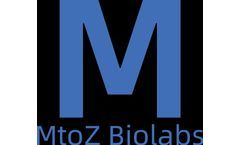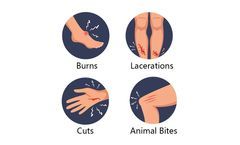Refine by
Wound Care Articles & Analysis
103 articles found
In surgical tissue recovery, focus is on controlling infection, managing inflammation, and ensuring wound closure. Beneath the surface—anatomically and biologically— the extracellular matrix (ECM) is undergoing remodeling ensure long-term tissue integrity. The ECM is a dynamic, biologically active network that orchestrates the entire process of tissue repair, remodeling, and ...
Chemokines are a specialized subset of small cytokines that play a crucial role in the immune system by directing the movement of circulating leukocytes to sites of inflammation, infection, and injury. Acting as chemoattractant molecules, chemokines are central to both innate and adaptive immunity, influencing not only immune surveillance but also wound healing and angiogenesis. Over the past few ...
The main focus of drug carrier research today is to identify carriers that are both safe and effective for clinical treatment applications. As treatment strategies advance researchers regularly update drug delivery systems. Traditional drug delivery systems consist of liposomes and polymer micelles together with nanoparticles but despite their inclusion in clinical trials current versions still ...
Its ability to bond with bone and promote tissue regeneration makes it an excellent material for dental applications. l Wound Healing: bioglass has been shown to promote wound healing by stimulating the growth of new tissue. It is used in dressings and other wound care products. l Drug Delivery: Researchers are exploring the ...
ByMatexcel
Human dermal fibroblasts-neonate (HDF-n) are specialized cells derived from the dermis layer of neonatal human skin. These fibroblasts play a crucial role in skin structure, function, and repair. They are pivotal in the study of dermatological conditions, regenerative medicine, and tissue engineering. Role and Functionality Fibroblasts are the primary cells responsible for synthesizing ...
Cytokines and growth factors are essential signaling molecules that play pivotal roles in immune regulation, inflammation, tissue repair, and numerous physiological and pathological processes. To comprehensively study these molecules, scientists often rely on high-throughput and sensitive technologies, among which Luminex Cytokine Panels have become a gold standard. This article delves into the ...
Human mesenchymal stem cells (hMSCs) are a remarkable type of stem cell found in various tissues, such as bone marrow, adipose tissue, and umbilical cord. These cells have garnered significant attention in the field of regenerative medicine and therapeutic research due to their unique properties and potential applications. Characteristics of hMSCs hMSCs possess the ability to differentiate into ...
Hip fractures are common, especially in older adults, and require timely medical and surgical intervention. These injuries can significantly impact a patient’s mobility, quality of life, and overall health. Hip fractures are a medical emergency, and delayed treatment can lead to severe consequences. Elderly patients are particularly vulnerable to complications from prolonged immobility, ...
Human umbilical cord cells, particularly those found in Wharton’s jelly, have emerged as a focal point in regenerative medicine and cellular therapy. Wharton’s jelly is a gelatinous substance that surrounds the umbilical cord’s blood vessels, providing structural support and protection. It is rich in mesenchymal stem cells (MSCs), which are known for their unique regenerative ...
HCEC-12 is a well-established human corneal epithelial cell line derived from human corneal tissue. It plays a crucial role in ocular research, particularly for studies related to corneal physiology, wound healing, and the pathogenesis of various ocular diseases. This article delves into the characteristics, applications, and significance of the HCEC-12 cell line in biological and medical ...
Elastase is a powerful enzyme that plays a critical role in various biological processes, both in physiological and pathological contexts. It belongs to the family of serine proteases, which are enzymes characterized by a unique serine residue in their active site. This enzyme is known for its ability to degrade elastin, a key protein that provides elasticity and resilience to tissues such as ...
Recombinant Type III Collagen is a type of collagen protein produced through biotechnological methods. In nature, collagen is a vital structural protein, widely present in the skin, bones, tendons, and other connective tissues of humans and animals. Type III collagen is particularly common in newly formed connective tissues and rapidly growing tissues, such as during the wound healing process.The ...
Structure of Matrix Metalloproteinase (MMP) Family In vertebrates, the MMP family consists of 28 members, at least 23 of which are expressed in human tissues, 14 of which are expressed in the vascular system. MMPs are usually classified into collagenases, gelatinases, stromelysins, matrilysins, membrane-type (MT)-MMPs, and other MMPs based on their substrates and the organization of their ...
Enzymes are the fundamental building blocks of life, playing crucial roles in countless biological processes. One such remarkable enzyme is Native Porcine Prolidase, which has garnered significant attention in the scientific community due to its unique properties and diverse applications. In this article, we will delve into the intricacies of this remarkable enzyme, exploring its structure, ...
Keratinase also finds application in the cosmetic and personal care industry, where it is used to enhance the softness and manageability of hair, as well as to improve the texture and appearance of skin and nails. ...
If we were to delve into the intricate world of biochemistry, we would come across the functionality of diverse molecules that perform essential roles in biological systems. One such class of molecules, peptides, are short chains of amino acid monomers linked by peptide bonds. These aren't just any ordinary molecules; these are functional peptides which undeniably contribute a significant part to ...
Electrospinning can produce continuous fibers on the micro - and nano-scale. The high flexibility and low cost of the material make electrospinning very attractive. In addition, the high specific surface area, porosity, and similarity to ECM ensure that the electrostatic pad promotes cell adhesion, skin regeneration, nutrient and oxygen transport, moisture retention, exudate removal, and ...
Collagen is the main structural protein in vertebrates. It plays an essential role in providing a scaffold for cellular support and thereby affecting cell attachment, migration, proliferation, differentiation, and survival. Natural animal collagen and its recombinant collagen are favorable replacements in human tissue engineering due to their remarkable biomedical property. However, this ...
Wound care is important, especially for the elderly. Giving them only love and care is far from enough, but you also need to learn how to effectively manage different types of wounds. In this article, we will discuss the best senior wound care solutions, quality senior care ...
And as the body get age, the skin wounds become more frequent. It's time to understand the advantage wound care for for optimal healing. ...












